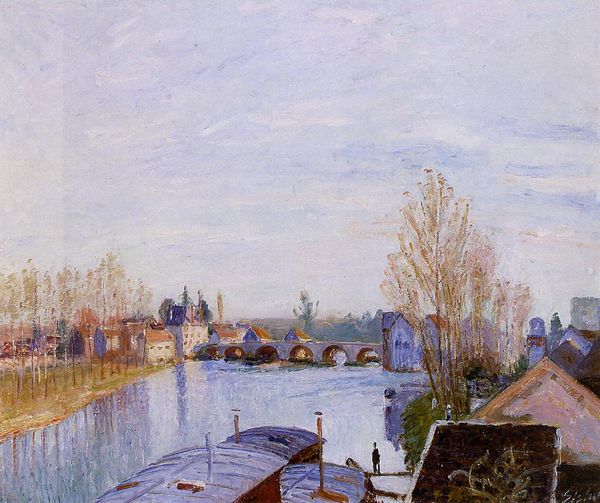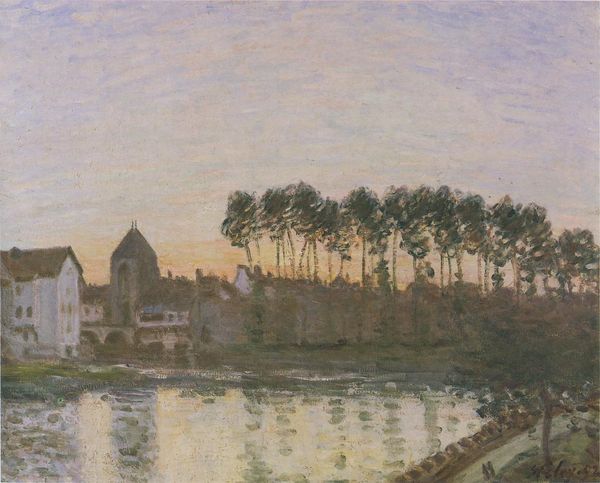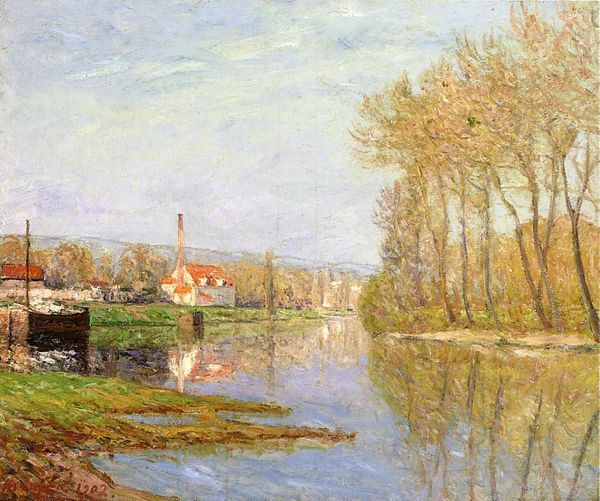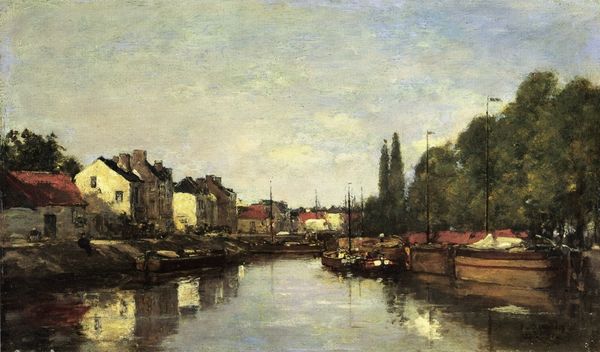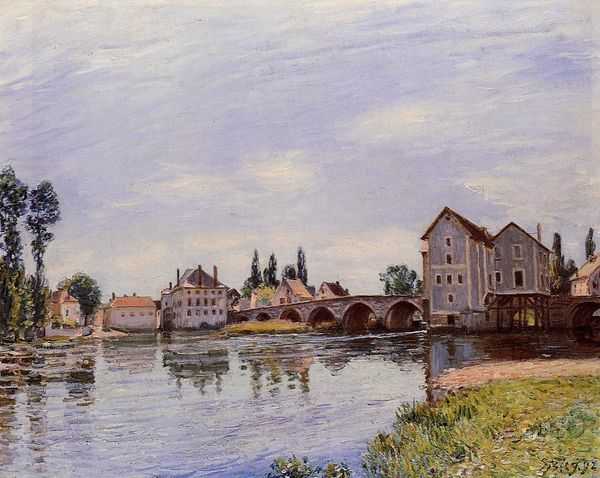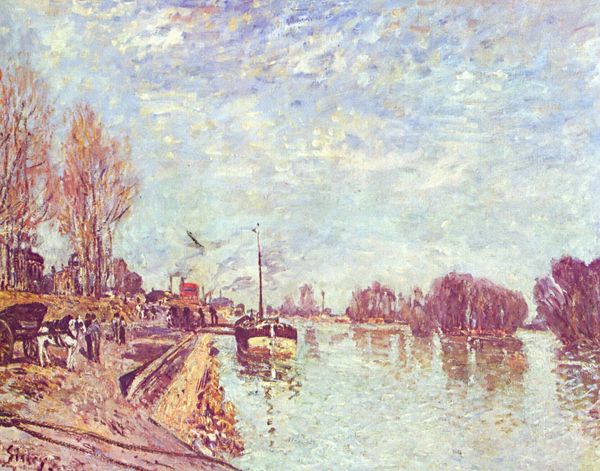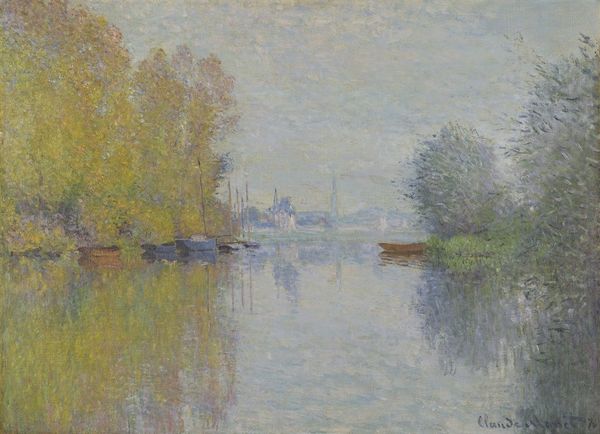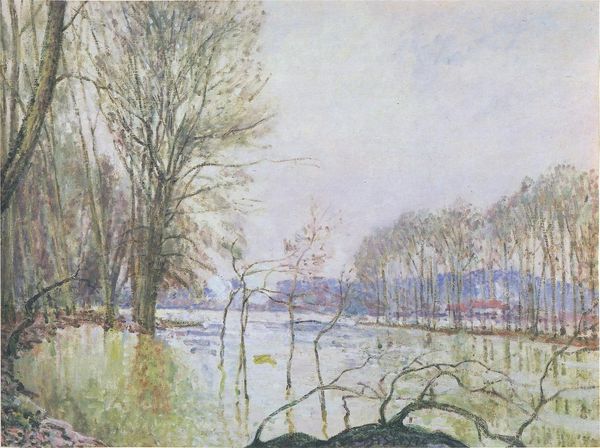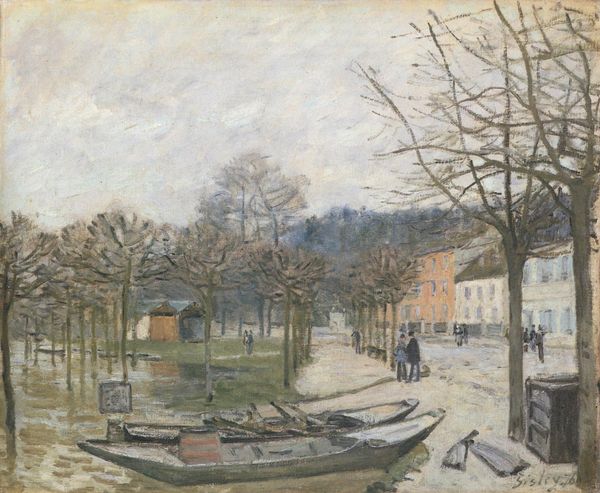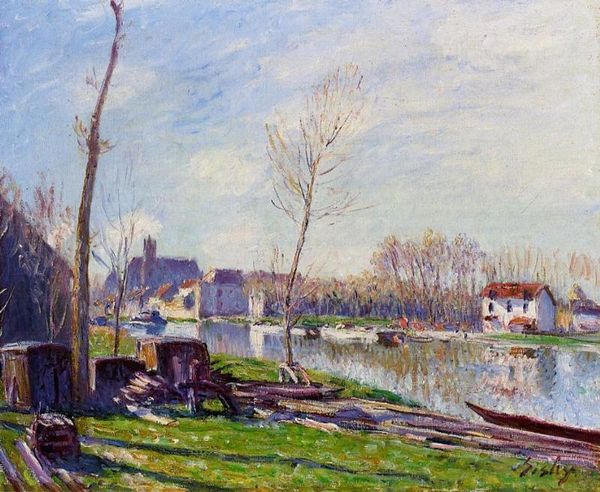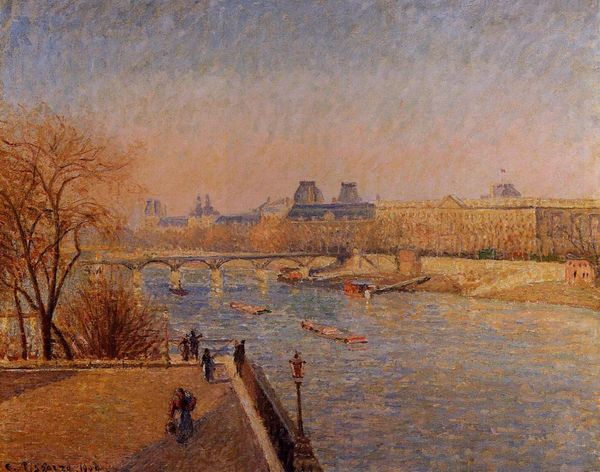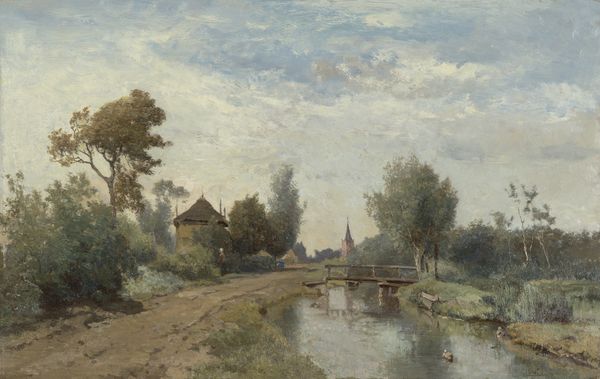
painting, plein-air, oil-paint
#
sky
#
painting
#
impressionism
#
impressionist painting style
#
plein-air
#
oil-paint
#
landscape
#
river
#
house
#
impressionist landscape
#
oil painting
#
painterly
#
water
#
cityscape
#
building
Copyright: Public domain
Editor: This is Alfred Sisley's "Banks of the Loing near Moret", painted in 1890. It's an oil painting, and the hazy light gives the whole scene a very dreamlike quality. What elements stand out to you when you look at it? Curator: Focusing on its formal properties, the painting immediately reveals a sophisticated arrangement of planes and a nuanced application of color. Observe how the horizontal expanse of the river bisects the composition, countered by the verticality of the trees and buildings. How does this juxtaposition affect your reading of the scene? Editor: I think it kind of grounds it. Without the buildings it would be a wispy sky scene. With them there's a sense of place, and human scale too. Curator: Precisely. Furthermore, note the artist’s delicate brushwork; short, broken strokes build up a mosaic of color, particularly evident in the reflections on the water. These marks don't just describe; they create a tangible surface, a play of light made material. The composition and use of color here offer what, in your view? Editor: Well, the brushstrokes definitely make you focus on the paint itself, almost more than what's painted. It becomes about surface and texture. Is that the point, in a way? Curator: In part. Sisley compels us to consider the painting as an object, not merely a representation. This tension between depiction and material presence is central to understanding its aesthetic project. What, for you, is the artwork’s lasting impact? Editor: It’s made me realise how much texture and layering goes into even a fleeting impression of a scene. Thanks! Curator: And for me, this exploration has reiterated the critical role that composition plays in structuring perception, even within the seemingly spontaneous gestures of Impressionism.
Comments
No comments
Be the first to comment and join the conversation on the ultimate creative platform.
